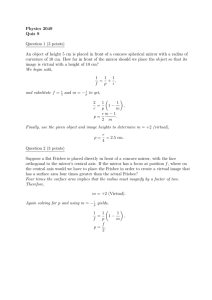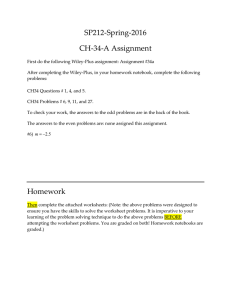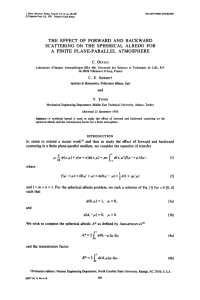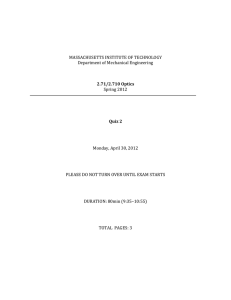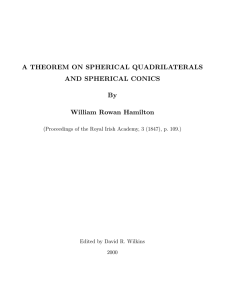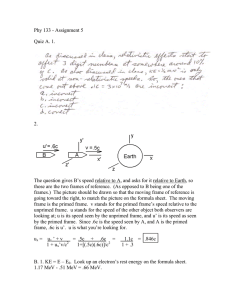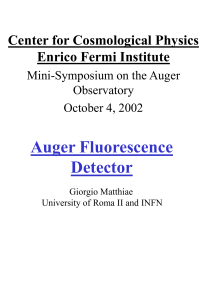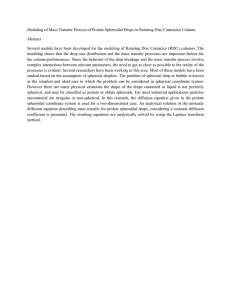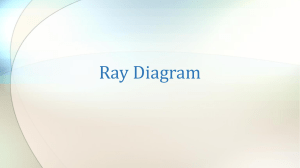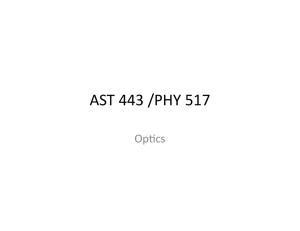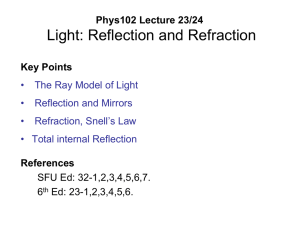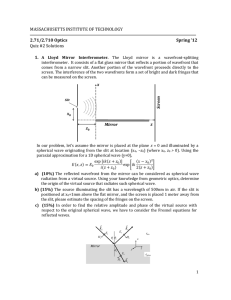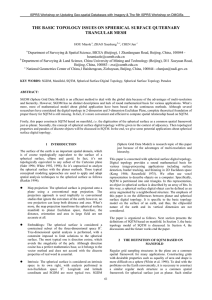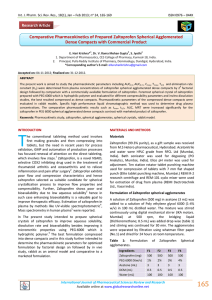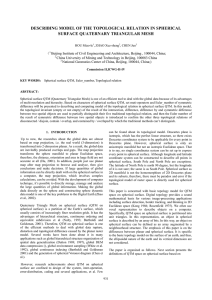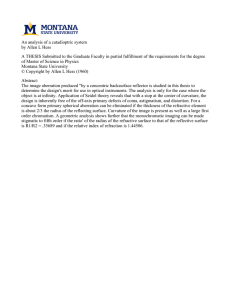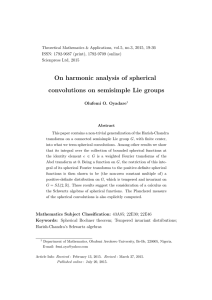Image Length problem
advertisement
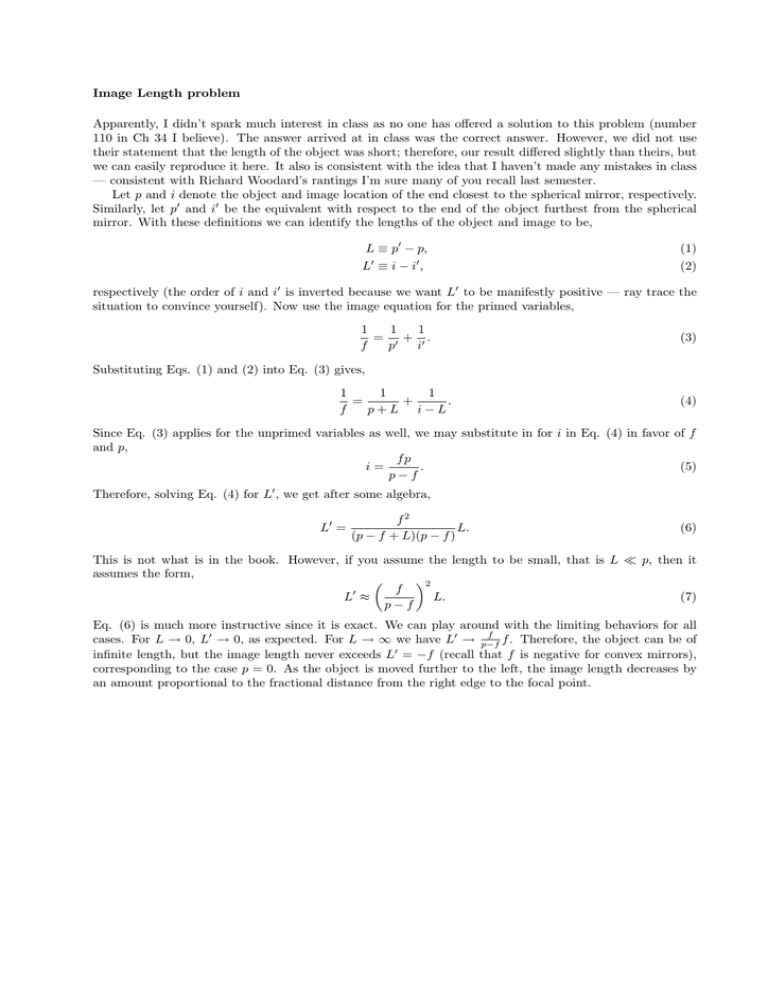
Image Length problem Apparently, I didn’t spark much interest in class as no one has offered a solution to this problem (number 110 in Ch 34 I believe). The answer arrived at in class was the correct answer. However, we did not use their statement that the length of the object was short; therefore, our result differed slightly than theirs, but we can easily reproduce it here. It also is consistent with the idea that I haven’t made any mistakes in class — consistent with Richard Woodard’s rantings I’m sure many of you recall last semester. Let p and i denote the object and image location of the end closest to the spherical mirror, respectively. Similarly, let p0 and i0 be the equivalent with respect to the end of the object furthest from the spherical mirror. With these definitions we can identify the lengths of the object and image to be, L ≡ p0 − p, L0 ≡ i − i0 , (1) (2) respectively (the order of i and i0 is inverted because we want L0 to be manifestly positive — ray trace the situation to convince yourself). Now use the image equation for the primed variables, 1 1 1 = 0 + 0. f p i (3) Substituting Eqs. (1) and (2) into Eq. (3) gives, 1 1 1 = + . f p+L i−L (4) Since Eq. (3) applies for the unprimed variables as well, we may substitute in for i in Eq. (4) in favor of f and p, fp i= . (5) p−f Therefore, solving Eq. (4) for L0 , we get after some algebra, L0 = f2 L. (p − f + L)(p − f ) (6) This is not what is in the book. However, if you assume the length to be small, that is L ¿ p, then it assumes the form, µ ¶2 f 0 L ≈ L. (7) p−f Eq. (6) is much more instructive since it is exact. We can play around with the limiting behaviors for all f cases. For L → 0, L0 → 0, as expected. For L → ∞ we have L0 → p−f f . Therefore, the object can be of 0 infinite length, but the image length never exceeds L = −f (recall that f is negative for convex mirrors), corresponding to the case p = 0. As the object is moved further to the left, the image length decreases by an amount proportional to the fractional distance from the right edge to the focal point.



